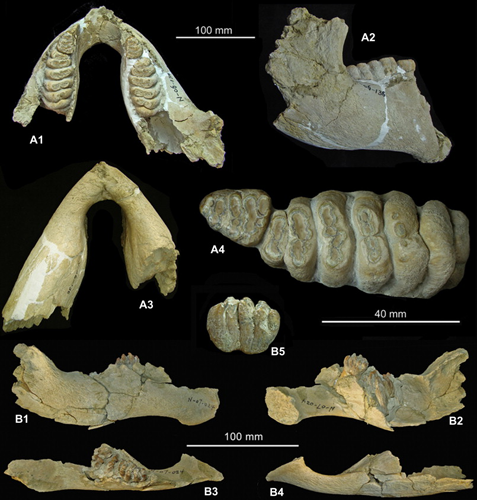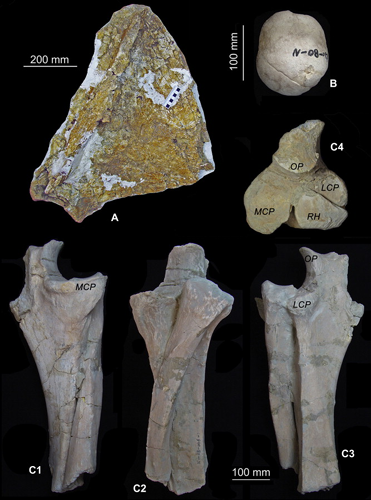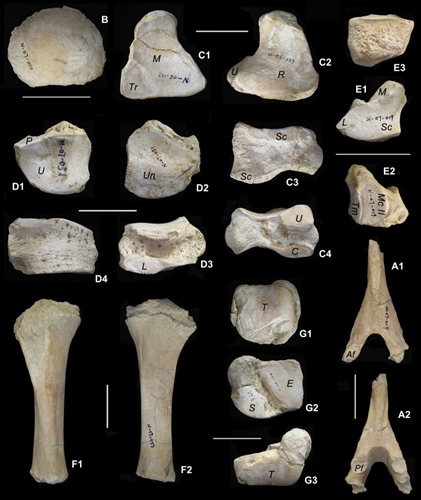The evolutionary relationships among Mammuthus, Palaeoloxodon and Elephas within the tribe Elephantini is still not quite clear. In China, the best fossil materials of elephantid ever recovered are exclusively attributed to the true woolly mammoth, Mammuthus primigenius, and the early mammoth is represented only by poor materials. Dr. TONG Haowen, a research professor at the Institute of Vertebrate Paleontology and Paleoanthropology (IVPP), Chinese Academy of Sciences, reported rich fossil materials of Mammuthus trogontherii from a new locality, Shanshenmiaozui, in the the Early Pleistocene of the Nihewan Basin, Hebei Province, China, according to a paper in press in the journal of Quaternary International 255 (2012) (http://dx.doi.org/10.1016/j.quaint.2011.07.035).
The materials include the most complete juvenile mandible with deciduous teeth preserved in situ ever discovered and some postcranial bones of Mammuthus trogontherii. They represent the only complete juvenile mandible of an early mammoth in the world, providing some important information for the study of the evolution of mammoths.
The Shanshenmiaozui locality lies near the hill of Xiaochangliang, a famous Paleolithic Site in the Nihewan Basin. Based on the horizon correlation in the field, the fossil-bearing sand-silt bed at the new locality can be correlated with the cultural layer at Xiaochangliang site whose paleomagnetic age is about 1.36 million years ago.
The new materials have relatively larger dp1, relatively lower lamellar frequency and thicker enamel layer, indicating a more primitive mammoth than the true woolly mammoth. The new materials was assigned to Mammuthus trogontherii based on the following features: larger dp2, dp3 has 7 lamellae, with thicker and slightly folded enamel, lower lamellar sequence and roundish front profile in crown view. All these features are intermediate between those of Mammuthus meridionalis and Mammuthus primigenius.
“Mammuthus trogontherii is so much variable that it is extraordinarily hard to diagnose. Because the previous studies based their diagnosis and identifications too much on the third molars, this species is not clearly defined at present”, said TONG Haowen, “Because of the diversified measuring methods, the frequency of ontogenetic and individual variations, the dimensions of the limb bones of the mammoth cannot provide much efficient information for taxonomic determination. Thus, the evolutionary relationships among Mammuthus, Palaeoloxodon and Elephas within the tribe Elephantini is still not quite clear. This new materials will provide some important information for the study of the evolution of mammoths.”
This work was supported by the Special Basic Research Project of MST of China, the International Cooperation Program of MST of China, and the IVPP Project.

Fig.1: Mammuthus trogontherii from SSMZ in Nihewan Basin; A1-A4, mandible and close-up of dp2–3 (V18010.1); B1-B5, right mandible and close-up of dp2 (V18010.2). (Images by TONG Haowen)

Fig.2: Mammuthus trogontherii from SSMZ in Nihewan Basin. A, left scapula (V18010.3); B, humeral head (V18010.4); C1-4, left ulna and radius (V18010.5-6). (Images by TONG Haowen)

Fig.3: Mammuthus trogontherii from SSMZ in Nihewan Basin. A1-2, spinous process (V18010.7); B, femoral head (V18010.12); C1-4, right lunar (V18010.9); D1-4, right cuneiform (V18010.10); E1-3, right trapezoid (V18010.11); F1-2, right tibia (V18010.13); G1-3, right astragalus (V18010.14). (Images by TONG Haowen)
|


